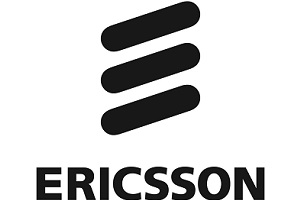Elisa and Ericsson have announced the launch of the In-Service Software Upgrade (ISSU) capability in the Ericsson’s dual-mode 5G Core solution which powers Elisa’s live production 5G Standalone (SA) network. It marks a key step in Elisa’s cloud-native digital transformation strategy as it continues to lay the important for automating and creating self-driving networks.
Ericsson’s dual-mode 5G core is designed as fully cloud-native and is deployed using containers with Kubernetes orchestration. One of the benefits of this cloud-native architecture is the ability to have an implementation architecture built on smaller building blocks microservices each of which can have separated lifecycle management processes. ISSU means that each microservice running in a live network can be upgraded and managed separately with their workload balanced by others in the relevant network function so there are no interruptions during the upgrade process to the end-user, or any impact on network KPIs.
It is seen as a key capability as operators like Elisa seek to maintain existing levels of service while introducing new technologies to capture new business opportunities. Additionally, managing software upgrades and maintenance in this way has multiple benefits for Elisa such as a reduction in manual effort for software upgrades, increasing the number of upgrades possible and enabling it to support new features faster.
Today, the capability is being used with live customer traffic in Ericsson’s dual-mode 5G core powering Elisa Finland’s live production 5G SA network, with plans to include the capability in other parts of the 5G Core solution in time. It was delivered via Ericsson’s continuous delivery and deployment (CDD) pipeline, an integral automation aspect of its cloud-native 5G Core. The project made Elisa the customer globally to launch ISSU through this deployment model.
Markus Kinnunen, vice president, cloud services, Elisa says, “Elisa is known as one of the most automated digital service providers in the whole world. Now we continue on this path by launching new capabilities in our 5G network together with Ericsson. 5G standalone network will further improve the customer experience and with the cloud-native infrastructure and enhanced automation we can unlock new services and business possibilities.”
Daniel Ode, acting head of customer unit Northern and Central Europe, Ericsson, says, “Upgrading and evolving software across the core network without interruption of service to end users is one of the hallmark benefits of cloud-native 5G architecture. We’re proud to have worked with Elisa to bring this functionality to its 5G Standalone network in Finland as part of a longstanding partnership to drive digital transformation in the country.”
Evolving to a cloud-native architecture is an important element in the journey to 5G SA. As well as being a new technical set-up, it will also have a major impact on a service provider’s operational model. Rather than being seen as an end-goal in itself, it is the means to achieving a range of benefits in 5G networks such as better speed of change and improved efficiency, higher network performance and greater openness.
Elisa’s continuously evolving 5G SA network brings with it significant benefits to its customers, both individual subscribers and enterprise customers. The SA implementation of 5G means end-to-end network slicing use cases can be more easily created, coverage range and capacity can be increased, and the super-fast response times with high data rates promised by 5G become available.
The addition to Elisa’s 5G SA network comes in a history of improvement shared between the two companies. Ericsson and Elisa established an end-to-end 5G Standalone connection in Finland in 2020, a Nordic first, and Ericsson was subsequently selected to provide the 5G Core network to support the 5G SA rollout by Elisa Estonia. In 2019, the two partners also piloted Ericsson’s private network solution for Elisa’s enterprise customers.
Comment on this article below or via Twitter: @VanillaPlus OR @jcvplus






